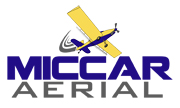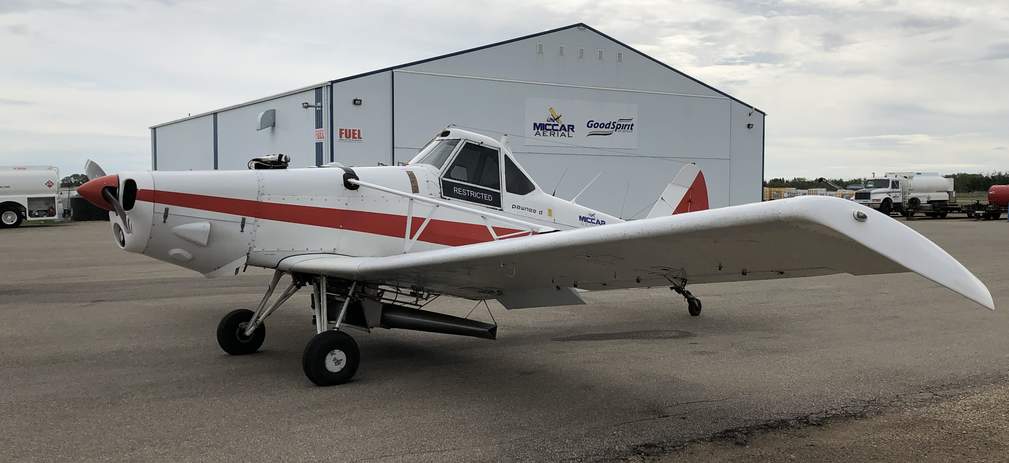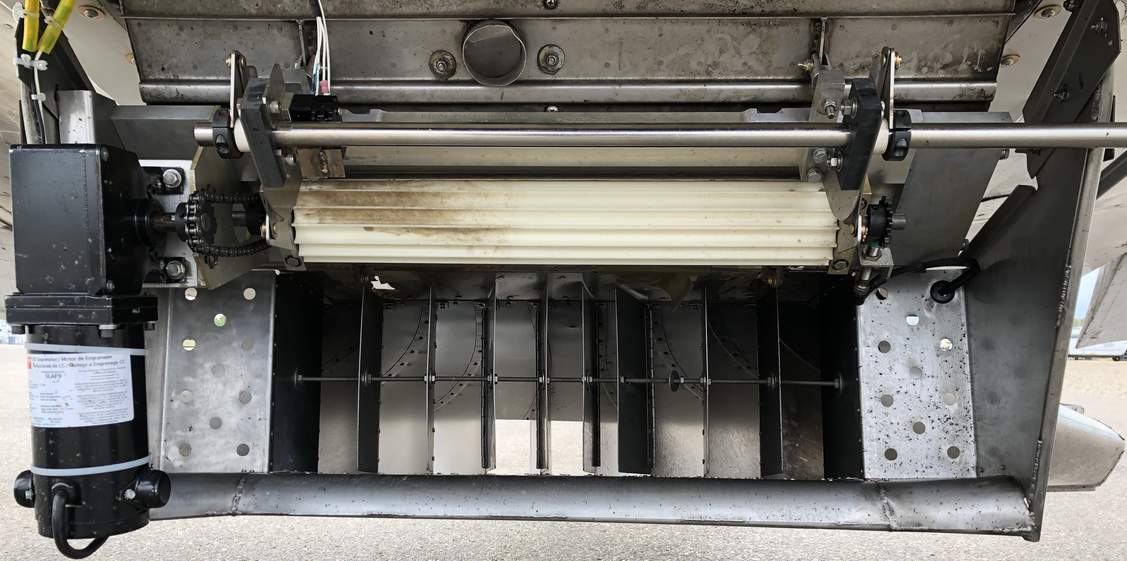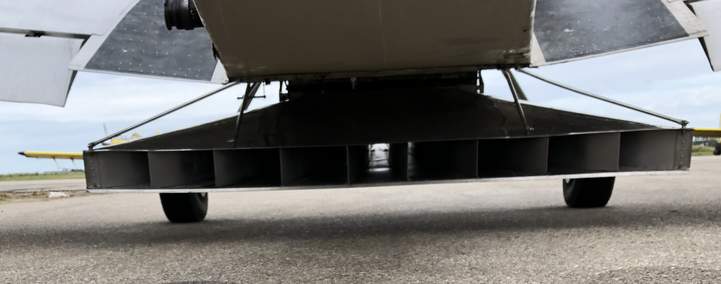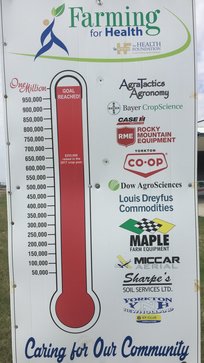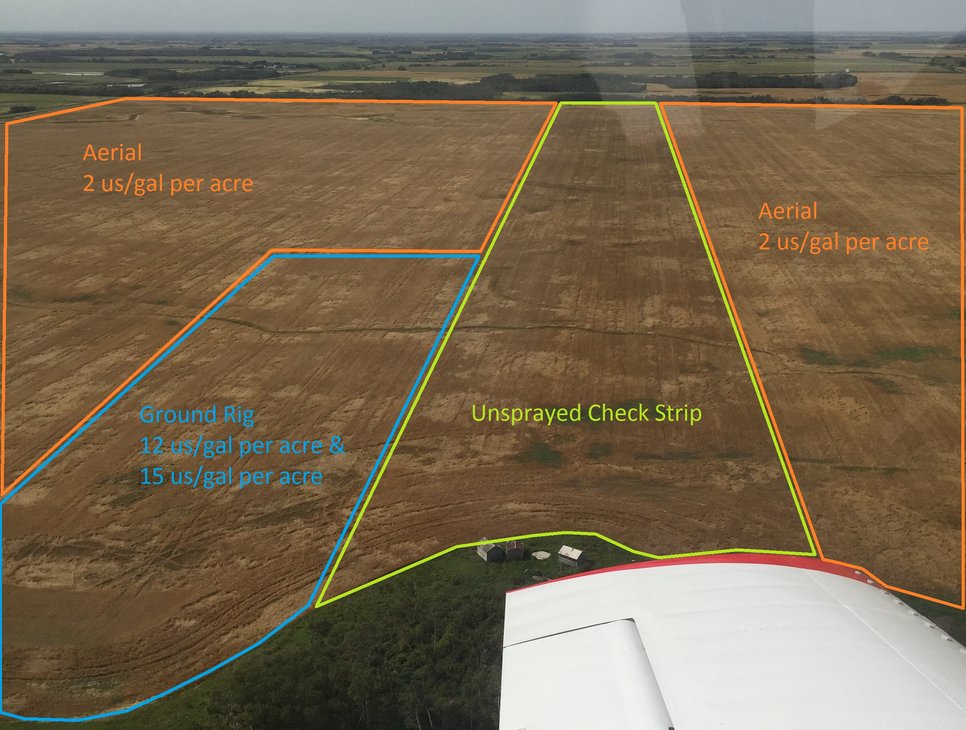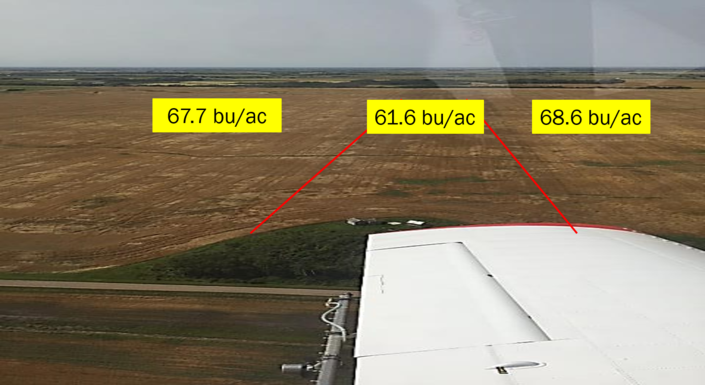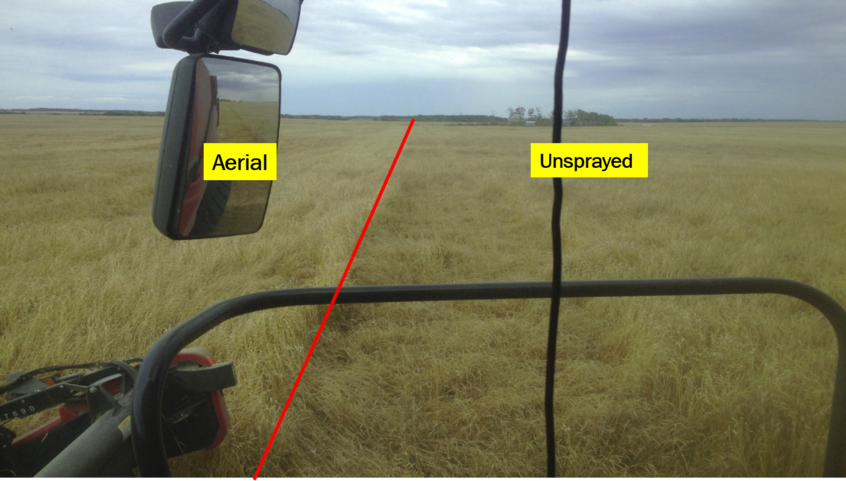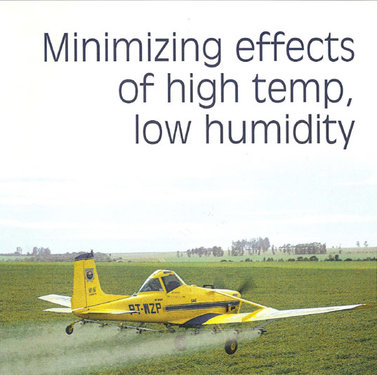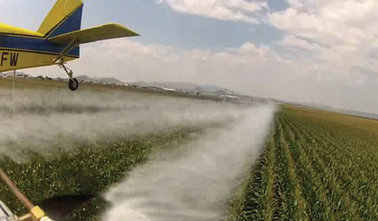We conducted a reduced water volume trial with Heat LQ during the 2015 harvest season on a standing Canola Crop. The aircraft and nozzles were calibrated to make a 1.5 US/Gal per acre application, the Heat LQ was mixed with Glyphosate in accordance with the product label. The application was made in the afternoon, average temperature was 20C with a relative humidity of 35%, wind was out of the south at 16 km/h. The aircraft used was one of our Air Tractor 401W with 8 ASC A10 Rotary Atomizers for nozzles. The Canola crop was uniform in height and yield, water sensitive cards were placed above the Canopy to capture the pattern near the top of the plants. Small mirrors were placed on the ground below each card to capture the drops that penetrated the canopy to cover any weeds below. The coverage above and below the canaopy was outstanding, we had monitored the crop up to harvest and noticed a reduction in time to maturity compared to other Canola crops sprayed with Heat LQ and Glyphosate at 3 us/gal per acre which took an additional 14 days to mature.
Above: Miccar AT401W applying Heat LQ + Glyphosate at 1.5 us/gal per acre
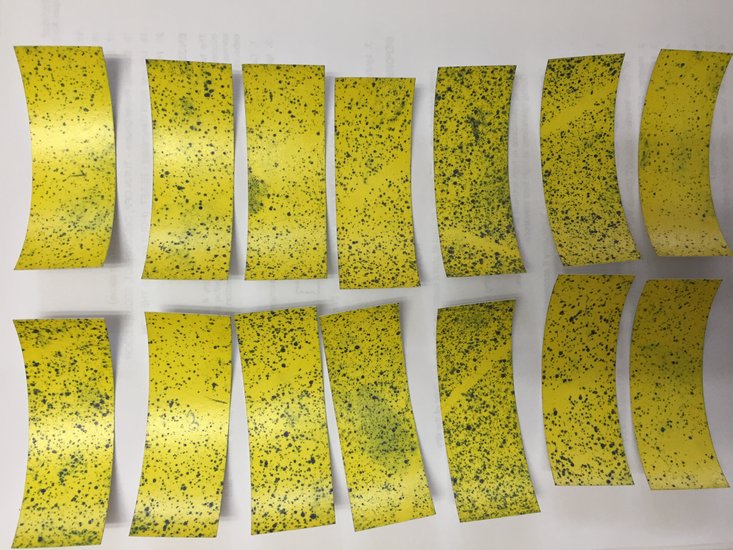
Above: Water sensitive cards at top of Canola canopy

Above: Mirrors that were placed on the ground below the water sensitive cards to show coverage at the ground level, you can see the actual drops on the mirrors that stayed "wet" for greater than 10 minutes after the application. This should prolong the "life" of the spray droplets which can enhance absorbtion of the product.
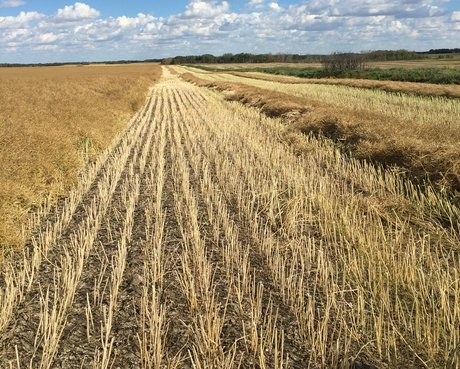
Above: Canola crop one week after application, note the difference in color of the stuble next to standing crop and where swaths are on the ground.
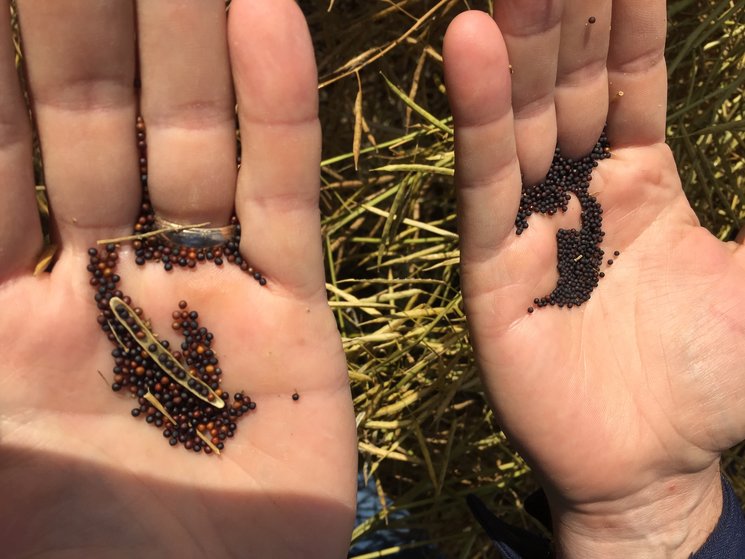
Above: Left - unsprayed Canola seed. Right - sprayed Canola Seed

